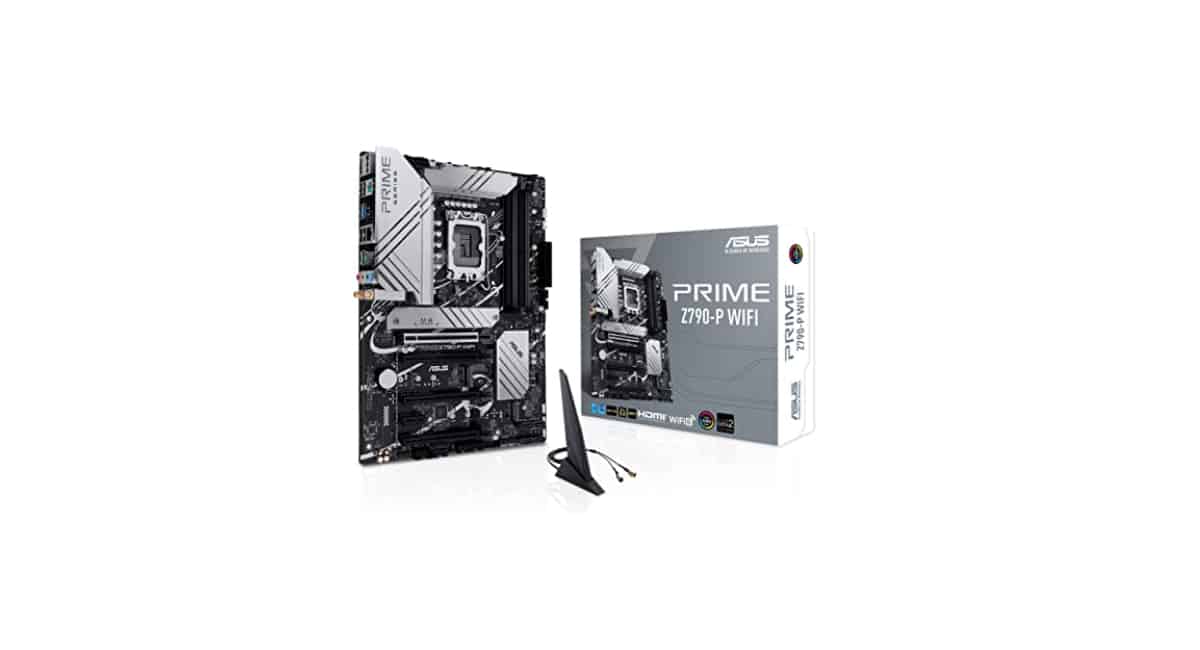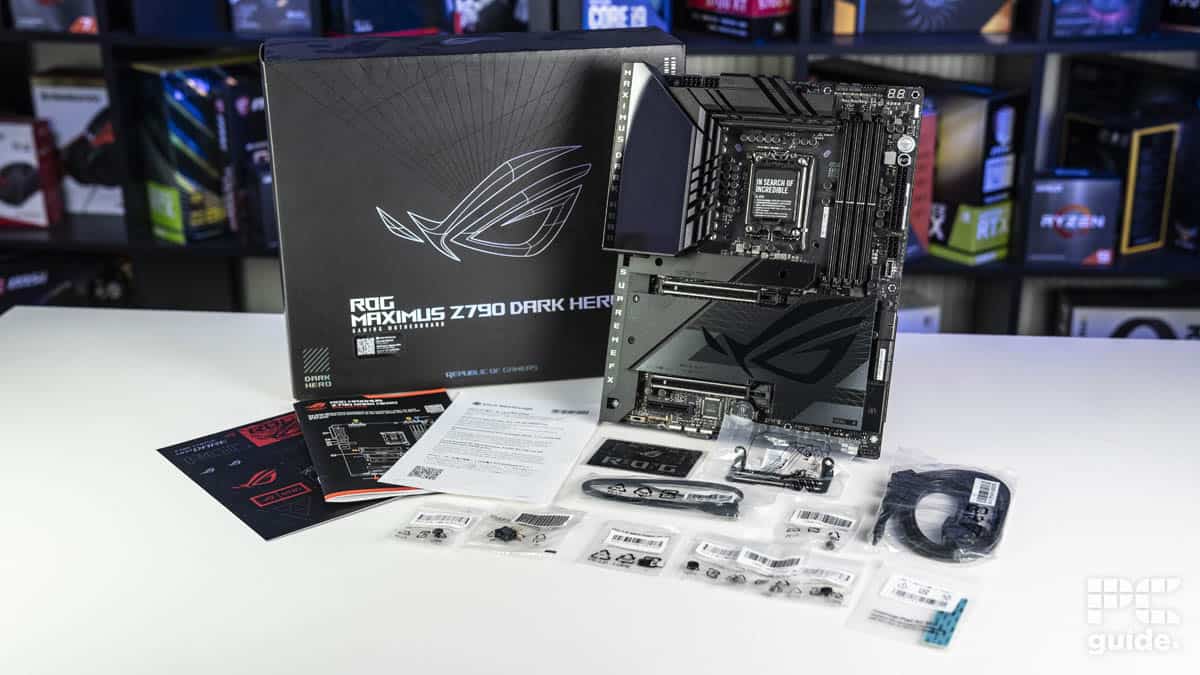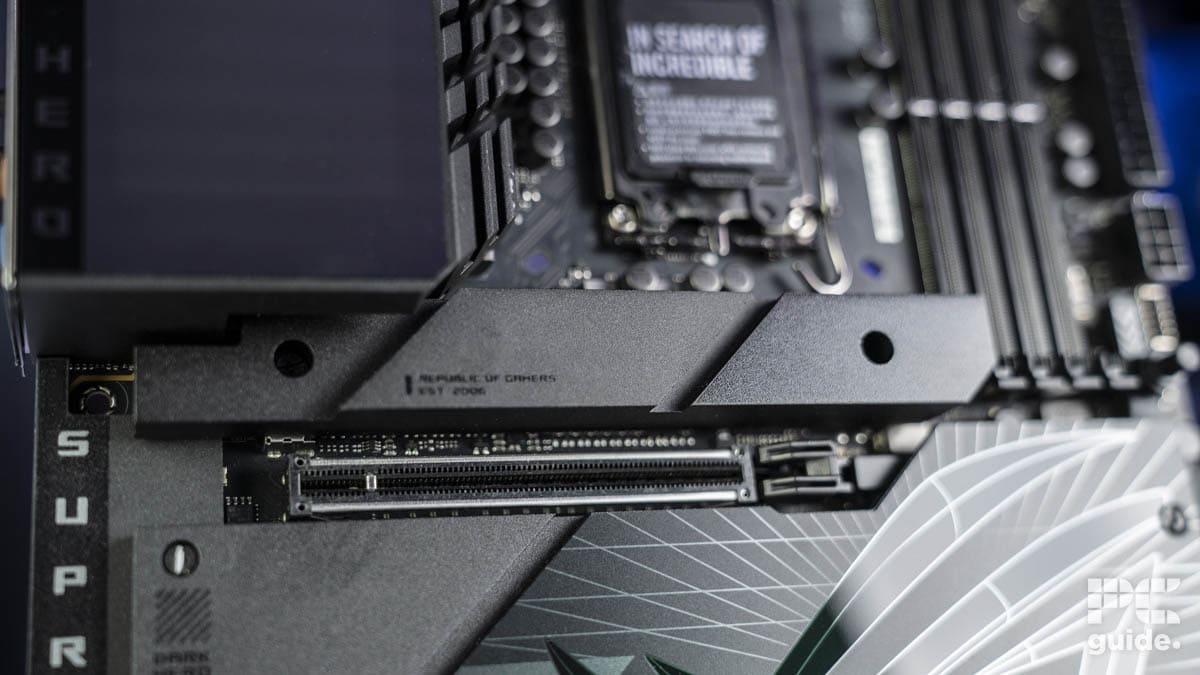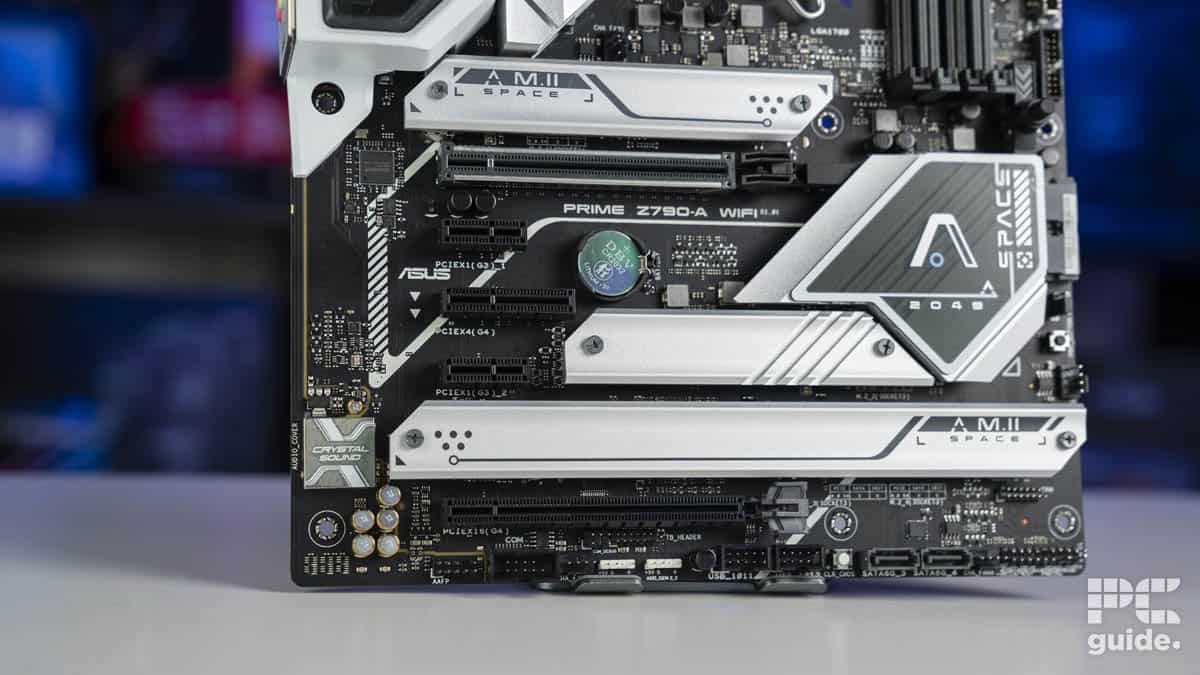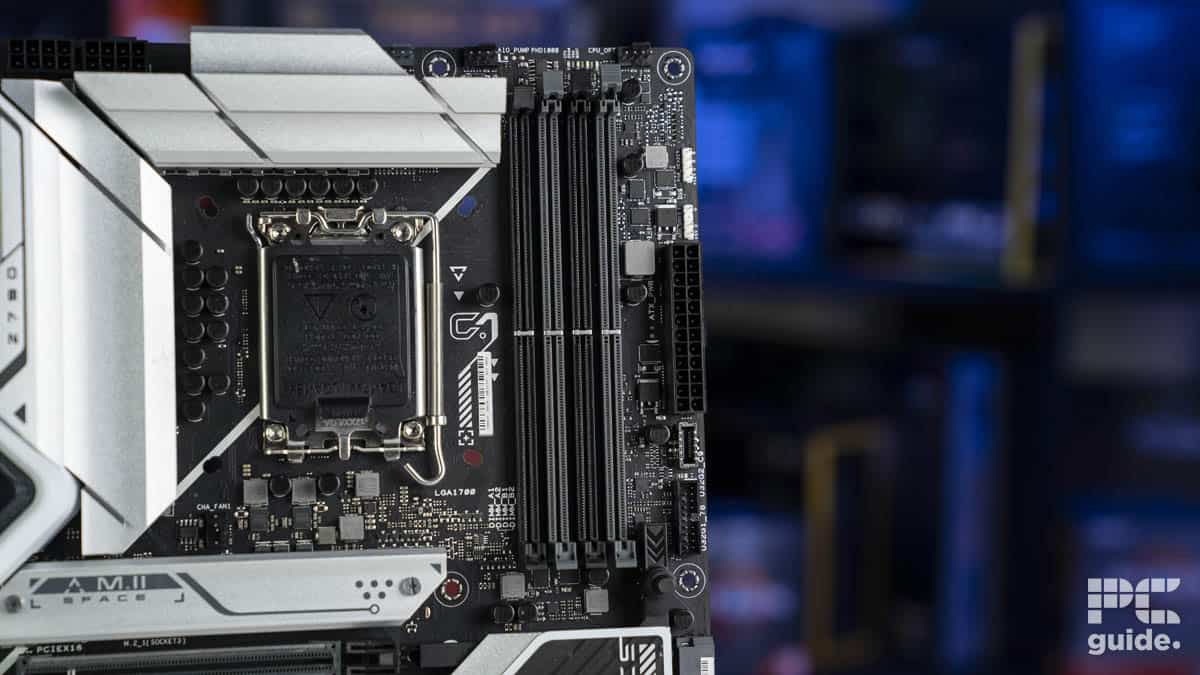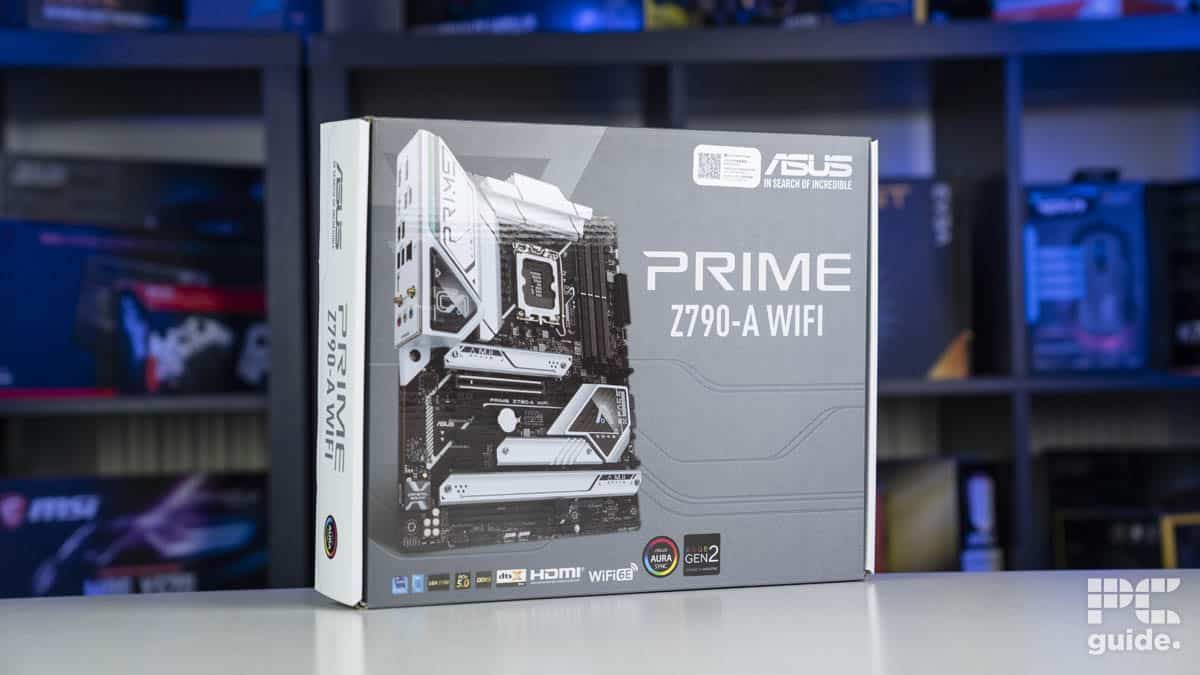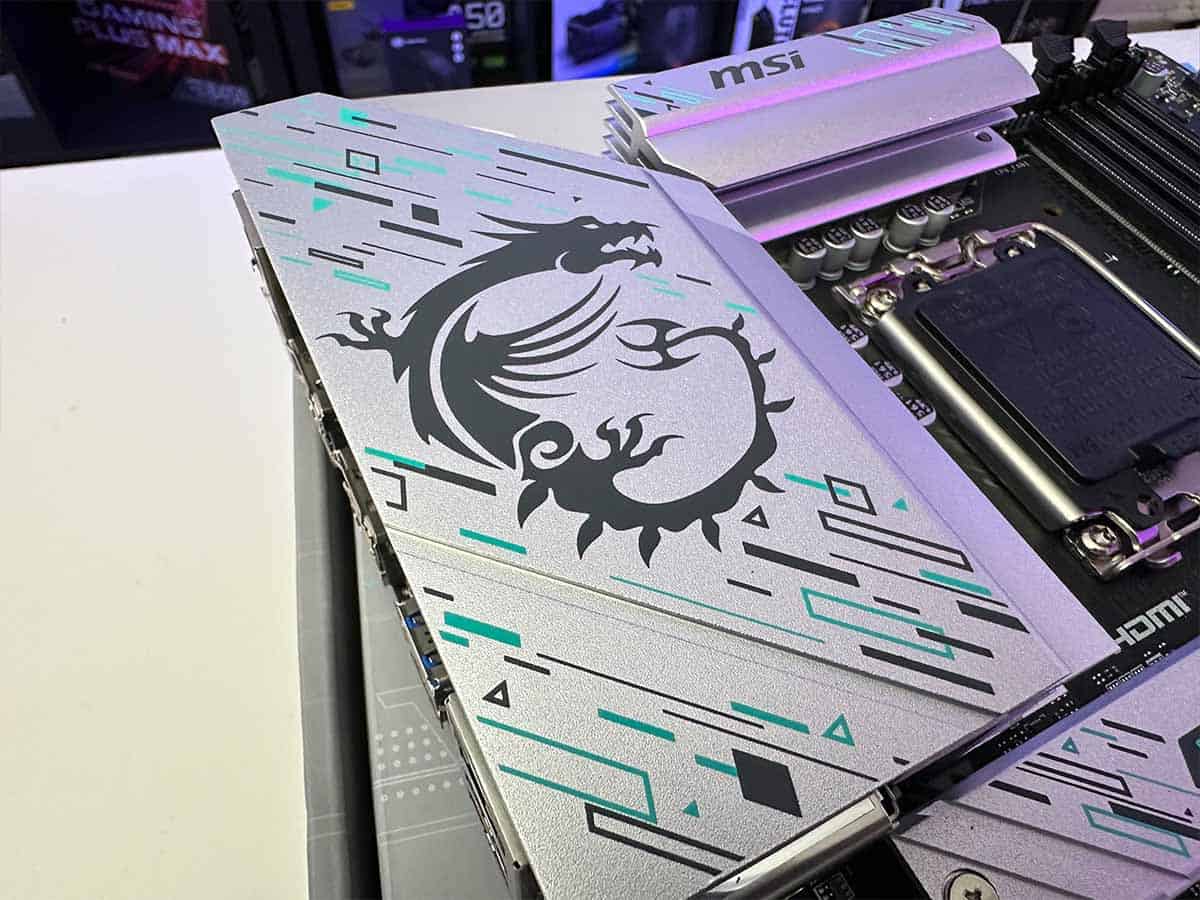Best motherboards for Core i5 13600K in 2025 – our top picks

Table of Contents
The Intel Core i5 13600K is a solid processor for gaming and productive workloads. Its performance is top-notch, as we've tested it in-house. That said, to get the most out of your processor, you need to pair it with a compatible motherboard, be it a high-end or a budget option. Compatibility is important.
We've reviewed a handful of options based on their price, features, size, thermal design, BIOS, and, most importantly, their overall performance during our in-house testing. So, without wasting another moment, let's get right into it.
Prime Day is finally here! Find all the biggest tech and PC deals below.
- Sapphire 11348-03-20G Pulse AMD Radeon™ RX 9070 XT Was $779 Now $739
- AMD Ryzen 7 7800X3D 8-Core, 16-Thread Desktop Processor Was $449 Now $341
- ASUS RTX™ 5060 OC Edition Graphics Card Was $379 Now $339
- LG 77-Inch Class OLED evo AI 4K C5 Series Smart TV Was $3,696 Now $2,796
- Intel® Core™ i7-14700K New Gaming Desktop Was $320.99 Now $274
- Lexar 2TB NM1090 w/HeatSink SSD PCIe Gen5x4 NVMe M.2 Was $281.97 Now $214.98
- Apple Watch Series 10 GPS + Cellular 42mm case Smartwatch Was $499.99 Now $379.99
- ASUS ROG Strix G16 (2025) 16" FHD, RTX 5060 gaming laptop Was $1,499.99 Now $1,274.99
- Apple iPad mini (A17 Pro): Apple Intelligence Was $499.99 Now $379.99
*Prices and savings subject to change. Click through to get the current prices.
Products at a glance
-
Best motherboard for the 13600K
ASUS ROG Maximus Z790 DARK HERO
- Socket: LGA 1700
- Chipset: Z790
- Form Factor : ATX
- PCIe Version : PCIe Gen 5 storage, Gen 5 GPU
- Memory speed : 8000+(OC)
- Memory capacity : 192GB, DDR5
-
Best runner-up motherboard for the 13600K
ASUS PRIME Z790-A WIFI
- Socket: LGA 1700
- Chipset: Z790
- Form Factor : ATX
- PCIe Version : PCIe Gen 4 Storage – PCIe Gen 5 GPU
- Memory speed : DDR5 7200+(OC)
- Memory capacity : 192GB
-
Best budget motherboard for the 13600K
MSI B760 Gaming Plus WiFi
- Socket: LGA 1700
- Chipset: B760
- Form Factor : mATX
- PCIe Version : PCIe Gen 4 storage, Gen 4 GPU
- Memory speed : 6800+(OC)
- Memory capacity : 256GB, DDR5
How we picked
We researched the market and found various options from industry giants. We filtered those options based on price, compatibility, performance, and other features. We also have a PC Guide Testing Lab in which we've mentioned our testing process for various components. If you're wondering how we select and review products, we've got your back there as well.
Our top picks

- Socket: LGA 1700
- Chipset: Z790
- Form Factor : ATX
- PCIe Version : PCIe Gen 5 storage, Gen 5 GPU
- Memory speed : 8000+(OC)
- Memory capacity : 192GB, DDR5
- High performance
- Great power delivery
- Superior build quality
- It comes at a premium
- ASUS Armoury crate is still bad
- Heavy to pick up if you struggle with wrists
We've reviewed the 13600K; its performance is nothing to scoff at. That said, our testing didn't overclock it or push it beyond its limit, but if you're looking forward to that, we recommend the ASUS ROG Maximus Z790 Dark Hero. When we tested it for its review, it had top-notch performance and efficiency.
For starters, this is an ATX motherboard with dimensions of 12 inches x 9.6 inches (30.5 cm x 24.4 cm), meaning it is not as big as an E-ATX board but wouldn't exactly fit inside the best mini-ITX cases either.
That said, with a large size comes more PCIe and RAM slots, and this board has a maximum memory capacity of 192GB DDR5 RAM running at 8000 MHz. This is overkill for almost any level of gaming and professional workloads, but it’s nice to know that you can ramp up your system's performance whenever you want. If you're interested in exploring some options, check out our best DDR5 RAM guide for the top picks.
The Dark Hero is one motherboard that means business, it is built for enthusiasts who want to make the most out of their CPU with overclocking.
PC Guide
As the name suggests, the Z790 Dark Hero features an enthusiast-level chipset and two PCIe 5.0 slots. These slots can be used together, but each will only get eight lanes. Alternatively, you can use one and get the full 16 lanes for the maximum bandwidth and transfer rate.
Many users configure their setup this way: They mount their GPU on the primary slot and leave the secondary slots for storage devices. If you're wondering how to install a GPU, we've got you covered.
Regarding its performance, we called in the 13600K's successor, the 14600K, and ran various benchmarking software, such as Geekbench and Blender, to simulate different workloads. We saw the motherboard drawing a maximum of 309.2W from the wall socket while the CPU hit its PL1 limit of 181W, which is perfectly fine. So, this motherboard wasn't limiting the CPU performance in any way and should be able to take it to the next level.
What users say
According to Amazon reviews, this is a powerful motherboard with good build quality, and its weights speaks toward that. One reviewer stated: “With its advanced ROG Water-Cooling options, the board ensures optimal thermal management, maintaining excellent performance even during intense gaming sessions. It supports the latest DDR5 memory, enhancing overall speed and responsiveness. The design is both robust and aesthetically pleasing, fitting well in any custom build.”

- Socket: LGA 1700
- Chipset: Z790
- Form Factor : ATX
- PCIe Version : PCIe Gen 4 Storage – PCIe Gen 5 GPU
- Memory speed : DDR5 7200+(OC)
- Memory capacity : 192GB
- It is pocket friendly
- It offers a lot for the price
- It has a great design and aesthetics
- No pre-installed I/O shield
- Lacks extensive OC support
- Other boards offer more features
If you don't want to spend a lot on a motherboard but still want high-end performance, we recommend the ASUS Prime Z790-A. When we tested this motherboard for our Prime Z790-A review, it has good performance across the board.
To begin with, this motherboard has an ATX form factor with dimensions of 12 inches x 9.6 inches (30.5 cm x 24.4 cm). It also supports PCIe 5.0 for the GPU but tones it down for the storage devices with PCIe 4.0. That said, it shouldn't massively impact performance.
It has a maximum memory capacity of 192 GB and a maximum compatible memory speed of 7200 MHz, which should be more than enough for most use cases. That said, a neat part of the 13600K is that it is compatible with DDR4 and DDR5 RAM. However, since this is a Z790 motherboard, you'll have to pair it with DDR5 RAM, which is expensive but performs better.
The Z790-A features a 14 + 1 DrMOS power delivery system, meaning the power goes through 14 phases at the first layer and then through 1 at the second layer. Having more phases is important as the power gets filtered more, the more stable and clean it comes out, which is crucial for overclocking a CPU.
This motherboard also features four PCIe slots, the primary one being the PCIe 5.0 slot with an X16 configuration. The others have 8 lanes and can be used to expand the storage.
The ASUS Prime Z790 is a no-thrills motherboard that can give you the best price to performance ratio of any Z790 on the market.
PC Guide
To explain the lanes, think of the lanes on a highway. The more lanes there are, the more cars can travel simultaneously. In this example, the cars are data. If we shrink the highway to 8 lanes instead of 16, fewer cars will be able to travel, and there'll be some traffic jams if there are too many cars. So, for a top-notch gaming experience, always give the GPU access to the most lanes.
Regarding this board’s performance, we used the same test bench with the 14600K and saw that it was able to draw a maximum of 281.7W from the wall socket but limited the CPU to 151W on average, whereas the PL1 limit of the 14600K is 181W. That said, we didn't notice a massive performance difference compared to the Z790 Dark Hero; the results were neck and neck.
So, even though it didn't hit max TDP, it still had good performance, which is what matters at the end of the day. That said, this is one of the best motherboards for 13600K, and you can even upgrade to more powerful processors without worrying about compatibility issues.
What users say
According to Amazon reviews, this board is an excellent choice for those looking to build a high-end system. One reviewer said: “After a less-than-ideal experience with the Ryzen 7900x3D CPU and Gigabyte motherboard, I made the strategic decision to change course and try the ASUS Prime Z790-A WiFi 6E LGA 1700 ATX Motherboard, coupled with the Intel i7 14700k CPU. This combo has proven to be nothing short of a revelation, setting a new standard in performance, stability, and ease-of-use.”

- Socket: LGA 1700
- Chipset: B760
- Form Factor : mATX
- PCIe Version : PCIe Gen 4 storage, Gen 4 GPU
- Memory speed : 6800+(OC)
- Memory capacity : 256GB, DDR5
- It is very affordable
- It has excellent performance
- It is lightweight and small
- It doesn’t have a protective backplate
- It has only two M.2 slots
- It can get hot during operation
The MSI B760 Gaming Plus WiFi motherboard is an excellent option for those operating on a budget. This motherboard has the entry-level B760 chipset but still performs well, as we tested it for our MSI B760 review.
To begin with, this motherboard has PCIe Gen 4 for the GPU and storage devices, which might be a deal breaker for some, but remember the price point this board is coming in at. On top of that, it has a maximum memory capacity of 256 GB DDR5 RAM running at a maximum frequency of 6800 MHz.
The MSI B760 has an elegant white design with some blue to help it pop. While it doesn't have a protective backplate, it does have plenty of connectivity options, like USB 3.2 and a 2.5 Gbps Ethernet port. It also has four RAM slots, giving it its massive 256GB memory capacity.
This motherboard is a fantastic pick for those looking for performance on a budget, it doesn't offer a lot in terms of features but it makes up for that in terms of power.
PC Guide
This board has a triple-phase design of 12 + 1 + 1, meaning the power gets filtered through three levels before reaching the CPU. This is great because it’s like the processor getting a well-balanced and nutritious diet.
Regarding performance, we were surprised to see that when we paired the 14600K with it, it performed better than our top two picks. It was pulling a maximum of 337.9W from the wall socket, and the package power went up to 194.4W, which is probably why it outperformed the high-end motherboards. We reckon the triple power filtering also had its part to play.
Overall, this motherboard is a solid option for the 13600K. It delivers excellent performance without burning a hole in your pocket, which is a win-win situation.
What user say
According to Amazon reviews, the MSI B760 is a great motherboard with top-notch performance and aesthetics. One reviewer said: “Performance-wise, this motherboard truly shines. The support for the latest processors and high-speed RAM allows me to run my favorite games and applications smoothly at maximum settings. The VRM cooling solution ensures that the temperatures stay in check even during extended gaming sessions, providing reliability and stability.”
How to choose the best motherboard for 13600K
Selecting a motherboard isn't just about picking the option with the most amount of bells and whistles, as those options can cost an arm and a leg. On top of that, depending on your processor, you might not even need all the features it is offering.
So, before investing in a motherboard, there are a couple of factors you need to keep in mind. They'll help you make an informed decision and operate within your budget.
Compatibility
The first factor you need to consider is the motherboard and processor’s chipset and socket compatibility. Different processors have different socket types. For example, the Ryzen 5000 series requires an AM4 platform, while the Intel chips are based on the LGA 1700 socket, and that is true for the 13600K as well.
This is important, as you can't mount a CPU on an incompatible motherboard. Doing so will damage the pins, and you'll need to get it repaired or order a new one.
Budget
Your budget for the motherboard is one of the most important factors to consider, as it determines which board you'll purchase. There are boards with varying chipsets, from enthusiast-level ones that support overclocking to budget ones that lack fancy features but get the job done.
That said, they also differ in price, as the high-end ones cost more. So, if you don't plan on overclocking your motherboard, a mid-range or budget LGA 1700 motherboard should work well with the 13600K. However, if your budget allows for some flexibility and you want to get the best performance out of the chip, investing in a high-end motherboard should be good for you as it'll have a better power delivery system that ensures smoother overclocking.
PCIe version
While PCIe versions are backward compatible, meaning you can mount a PCIe 4.0 device on a PCIe 5.0 slot, its performance will be limited due to the comparatively old hardware. This is important to consider as it will impact the rig’s overall performance.



